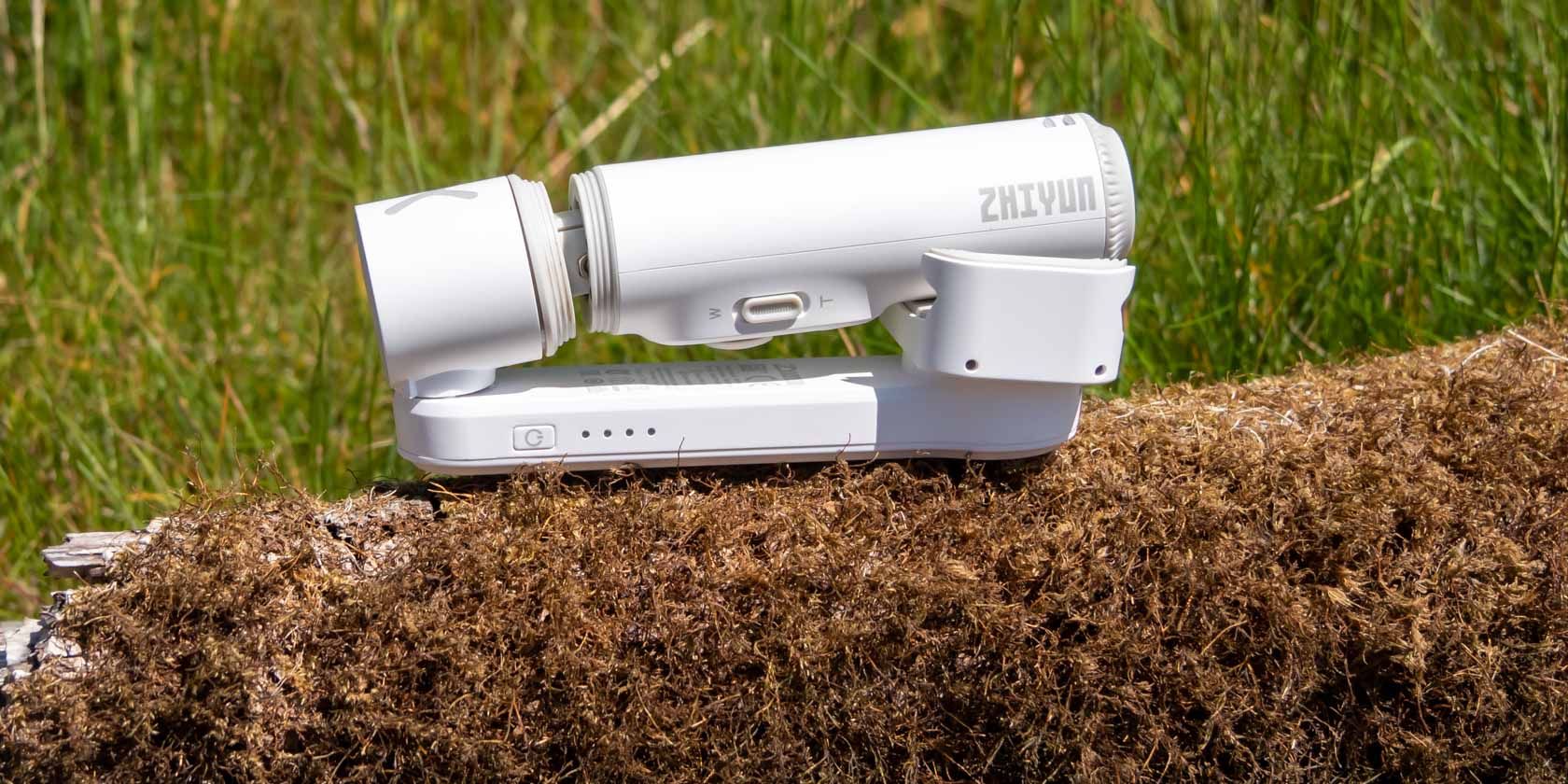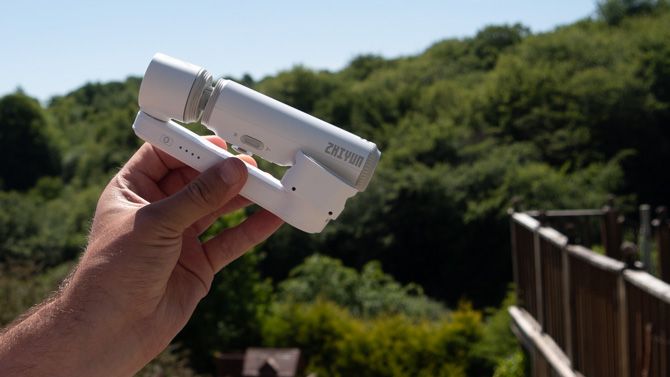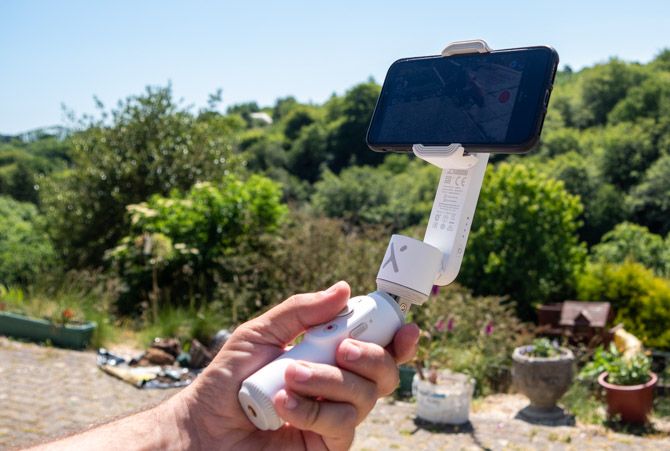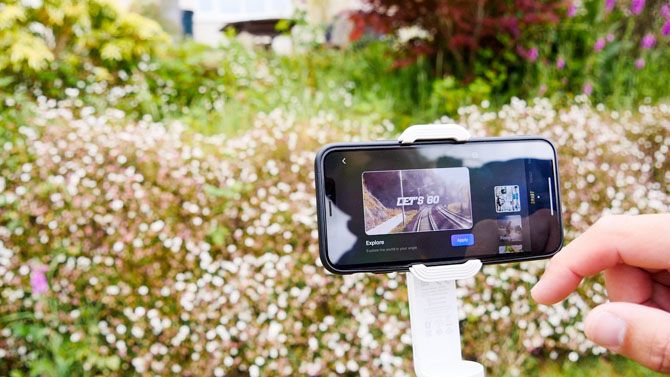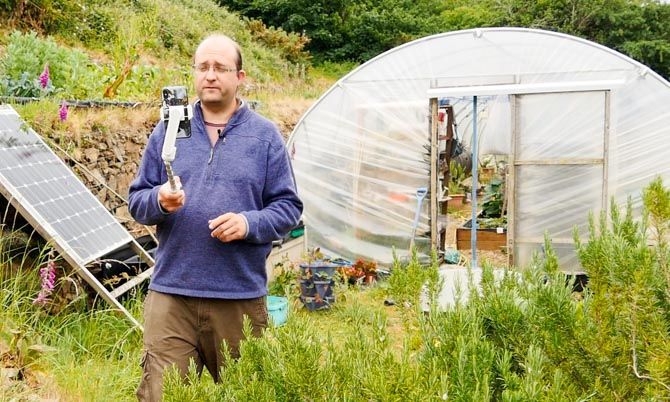Zhiyun Smooth X
There's a lot of great features packed into such a small package, but the lack of yaw stabilization ultimately limits the use of the Smooth X.
The latest smartphone cameras have reached the point where they can shoot some incredible 4K resolution 60FPS video given the right lighting conditions. Sadly, evolutionary upgrades to the shakey bags of flesh we use to hold those miniature cameras have not kept pace. That's why everyone who is serious about taking videos on their smartphone needs a gimbal. The question is just which one to buy.
Smartphone gimbals aren't a new concept by any means, but Zhiyun's latest offering, the Smooth X, weighs less than 250g and folds up to a palm-sized package. Despite coming from a credible brand name in the world of gimbals, it costs just $59. That makes it one of the most budget-friendly gimbals on the market. But it good enough, or would you be better saving your pennies for something bigger?
To really demonstrate the capabilities of this gimbal, the review video above was shot almost entirely using an iPhone X mounted on the gimbal. You'll see a mixture of selfie-style videos from the front camera, as well as those shot on the rear camera. If you still need an excuse to watch, you'll also see our cute pigs.
Zhiyun Smooth X Features
Inside the box you'll find the palm-sized stabilizer and a USB-C charging cable. The Smooth X comes in white or dark gray and features an extendable 10-inch (26cm) selfie extension stick. In terms of hardware controls, you'll find a four-way joystick, mode select, record, and zoom buttons.
The Smooth X is a 2-axis stabilizer. Using an accelerometer and motors, it can stabilize the pan (left/right) and roll (rotational) axes, but not the yaw (or tilt). The angle of your smartphone can be manually adjusted, so you're not stuck holding it upright.
On the base of the Smooth X you'll also find a standard 1/4-inch tripod attachment point.
Battery life is around 4 of continuous use, or about a day for more typical usage scenarios. Sure enough, after an hour of filming around the garden, 25% of the battery had been depleted. In reality, battery life shouldn't be an issue for most people: your phone will die from continuous video shooting long before the gimbal does. A full charge takes 45 minutes through the USB-C port.
Using the Smooth X
Before you can first use your gimbal, you'll need to unfold it, which can be a little fiddly.
First, spin the handle around so the controls are facing upwards. Next, extend the handle an inch or so, revealing the manually adjustable pivot point. Grab hold of the gimbal motor attached to this point, and flip the handle up slightly. Then keep holding the gimbal, grab the underside, and rotate the handle 180 degrees until it locks in place. You can now place your phone into the spring-loaded holder, and hold down the power button to activate the Smooth X.
Utilizing Bluetooth, the Zhiyun Smooth X can control the native camera application of your phone (start/stop, zoom), or more features can be unlocked through the accompanying ZY Cami app.
There are three basic modes for using the Smooth X:
- Pan-follow. This is the default when you turn on the device as it's the most commonly used. The gimbal will follow and smooth out any panning (left-right) movements that you do. The roll axis however will be locked, maintaining the level you set (which can be adjusted using the joystick up/down).
- Lock mode. Tap the mode button once to access lock mode. In this mode, the gimbal will maintain the current facing and level of the camera, with both the pan and roll axes canceling out your motions. This is typically useful for following alongside a subject.
- Full-follow. Tap the mode button three times to enter full-follow, in which both roll and pan movements will be permitted (but smoothed out). This offers the most creative freedom, but most people will rarely want to use it.
Object-tracking is also possible when using the ZY Cami app. Simply drag around the subject, and the gimbal will attempt to keep it in frame.
In practice, I found the lack of yaw stabilization meant that vlog-style walking along and talking resulted in far too much vertical jitter in the video, which you can see in the review. Standing still this was obviously less of an issue, but there's still only so much motion you can cancel out with two axes rather than three.
ZY Cami and Quick Stories
Requiring email registration and hardware activation, the ZY Cami app must be used if you want the additional gesture controls, object tracking, or finer camera adjustments than those offered by native camera apps. Object tracking worked well enough, though this is a fairly common feature among gimbal apps nowadays.
The quick stories mode allows you to choose from a set of ready-made short film templates. Each is around 10-20 seconds length each and featuring an accompanying music track. The app will show you a quick preview video for each shot needed, and all you need to do is point toward the subject and hit record. The gimbal will automatically produce any motions required, panning or rotating the camera for you. The results are about as can be expected, and would make for some good Instagram posts. But I think you'll get bored of them fairly quickly given the low number of templates currently available.
Great for TikTok?
One neat feature of the Smooth-X is the ability to spin your smartphone between vertical and horizontal filming. If you're filming multiple shots in succession with the intention of publishing to both formats, this could be a significant timesaver, cutting down the effort needed to manually rotate and rebalance the mount.
Should You Buy the Smooth X?
Zhiyun has packed an incredible amount of features into a palm-sized budget $59 package. It's lightweight, yet powerful enough to handle larger phones. It can fold up and fit in your pocket for ultimate portability. There's no doubt this is one of the best 2-axis gimbals around. But the wider question is whether you sacrifice too much by losing that third axis.
Modern smartphones have some degree of hardware stabilization built-in to the rear camera anyway. If you're holding your smartphone with both hands and panning around the rear camera, you probably don't need a gimbal. I did find the selfie extension very useful for getting ground-level intimate stabilized shots of our animals, but that's not exactly a common scenario.
Vloggers will find a lot of vertical jitter from the yaw axis if you try to walk around while filming on the front camera, which essentially limits the Smooth X to those who are mostly standing or sitting still. It's probably better to think of the Smooth X as a really good selfie-stick, rather than a stabilizer for all smartphone filmmakers.
For everyone else, I'd recommend saving up for a 3-axis gimbal instead, which will be twice the price (and won't fit in the palm of your hand).

